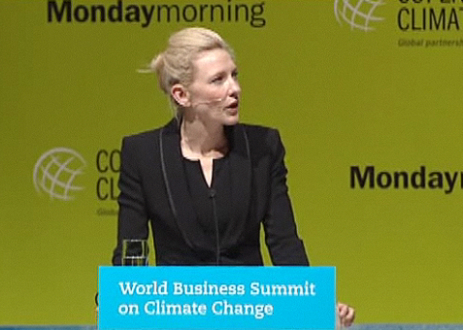Yesterday, I explained why we shouldn’t confuse wealth transfers with taxes. Today, I fulfill my promise to follow up with math. (Contain your excitement!) On the theory that you should (a) stick with what you know and (b) avoid speculating on shoddy data, I’m limiting this math to the electric sector, but the conclusions are generalizable.
How much does carbon pricing cost us on our electric bills?
The surprising answer? Not much.
In 2006, there was a total of 4,058,285,000 MWh of power generated in the US. 49% came from coal, 20% from natural gas, 19% from nuclear, 7% from hydro and the remaining 4% from a mixture of renewables, petroleum, and various waste gases.
Looking just at the fossil fuel uses (to estimate the CO2 release per sector), during the same year the electric power sector burned 1,053,783 thousand tons of coal, 131,005 thousand barrels of petroleum, and 7,404,432 thousand Mcf of natural gas. Taking some middle-of-the-road estimates for CO2 content by fuel type (2.14 lbs/lb of coal, 0.13 lbs/scf of natural gas and 922 lbs/barrel of oil), that works out to a total fossil (e.g., non-renewable) CO2 release from the electric sector of 2,784,805 thousand tons.
(Wonk note: For any given year, there are lots of estimates available from the EPA and elsewhere of sector-specific CO2 emissions. I’ve chosen not to use those here only to avoid any questions of data integrity, since not all data sets treat non-CO2 GHGs in the same way, cross-border trades with Canada & Mexico, transmission and distribution losses, etc. I don’t suggest that my math here is precise, but rather that if we draw all data from the same EIA dataset, we at least have the benefit of internal consistency.)
OK, now for some multiplication and division. Dividing CO2 emissions by power generation, we get an average CO2-intensity for the whole U.S. power grid of about 0.68 tons/MWh. In other words, for every $1/ton of price on carbon, there is a total increase in energy costs of $0.68/MWh. So if we assume that carbon prices will work out to something like $20/ton (note that Waxman-Markey has a $28/ton cap as currently formulated), that means an increase in total electricity costs of $13.60/MWh, or 1.4 cents/kWh.
Let’s put that in perspective: that’s the difference in retail electric rates between Maine (13.9 cents/kWh) and Massachusetts (15.3). Or, if you prefer, a tad less than the difference between the prices in Kentucky (5.6) and Tennessee (7.1). To argue that this increase in retail electric rates is economically unpalatable is to argue that the Tennessee and Massachusetts economies are doomed to suffer a mass exodus across their northern borders unless they can get their rates down.
Alternatively, given the current average U.S. power prices of 9.75 cents/kWh, that $20/ton carbon price works out to a 14% rate increase. Nothing to sneeze at, to be sure, but compared to the massive rate increases that utilities like AEP are asking for even in a pre-carbon world, you’ll hardly notice.
That’s not to make light of the impact on people’s wallets from power price increases, but rather to acknowledge that the impacts we are talking about pale in comparison to the economic impacts caused by much more mundane issues (like which side of the Tennessee/Kentucky border you live on).
So why all the fuss? Not because 1.4 cents/kWh is going to kill our economy. Rather, it’s a big deal from the perspective of a power plant owner. A $20/ton carbon price imposes something like a ~40% reduction in the profits of a modern coal-fired power plant unless they can pass it along to their customers. And let’s be very clear: it is not the concern for their customers’ wallets that has driven the coal industry to demand a free right to pollute (no matter how much their PR departments claim otherwise).
That’s why the fuss. Not because of economic disruption, but because of wealth transfers from the politically-powerful coal industry to the (comparatively weaker, and much less well-organized) renewable, gas, and nuclear lobbies. The politics may be distasteful, but that doesn’t make it any less real.
That said, when politics stands in the way of good policy, it behooves us all to demand better. It behooves us all to do the math.



